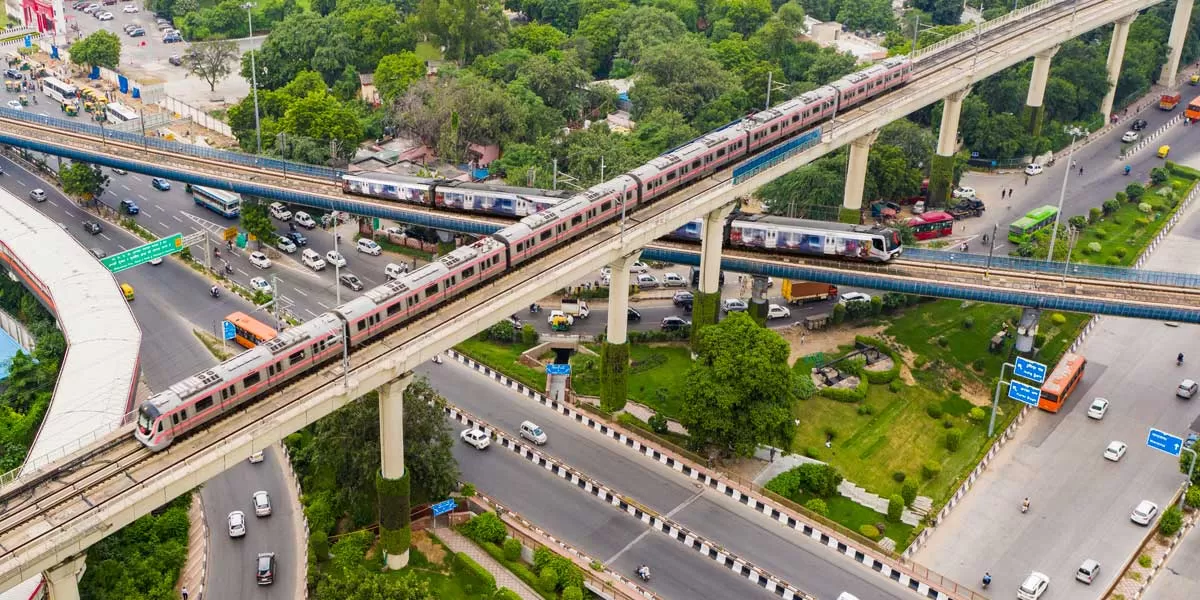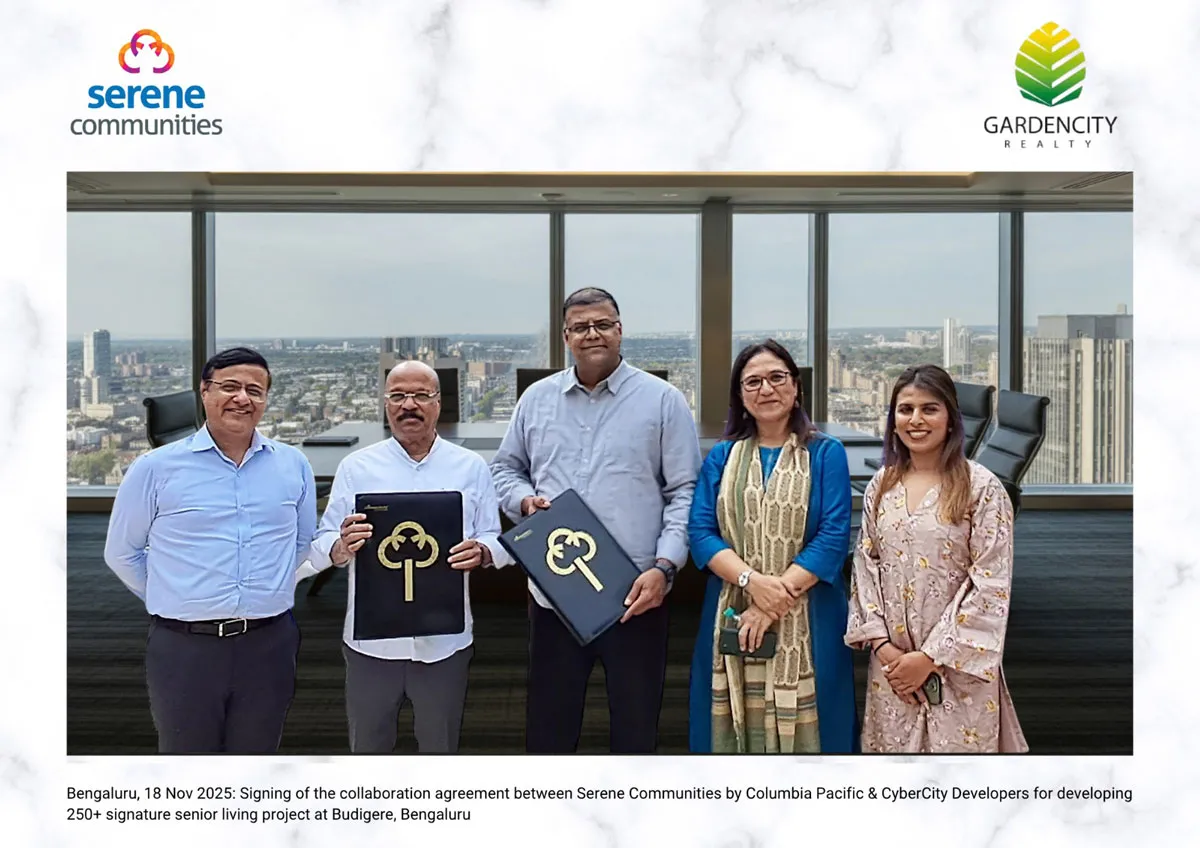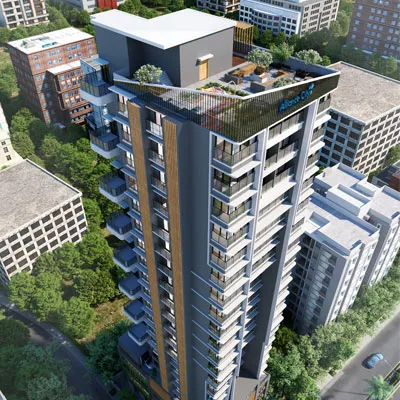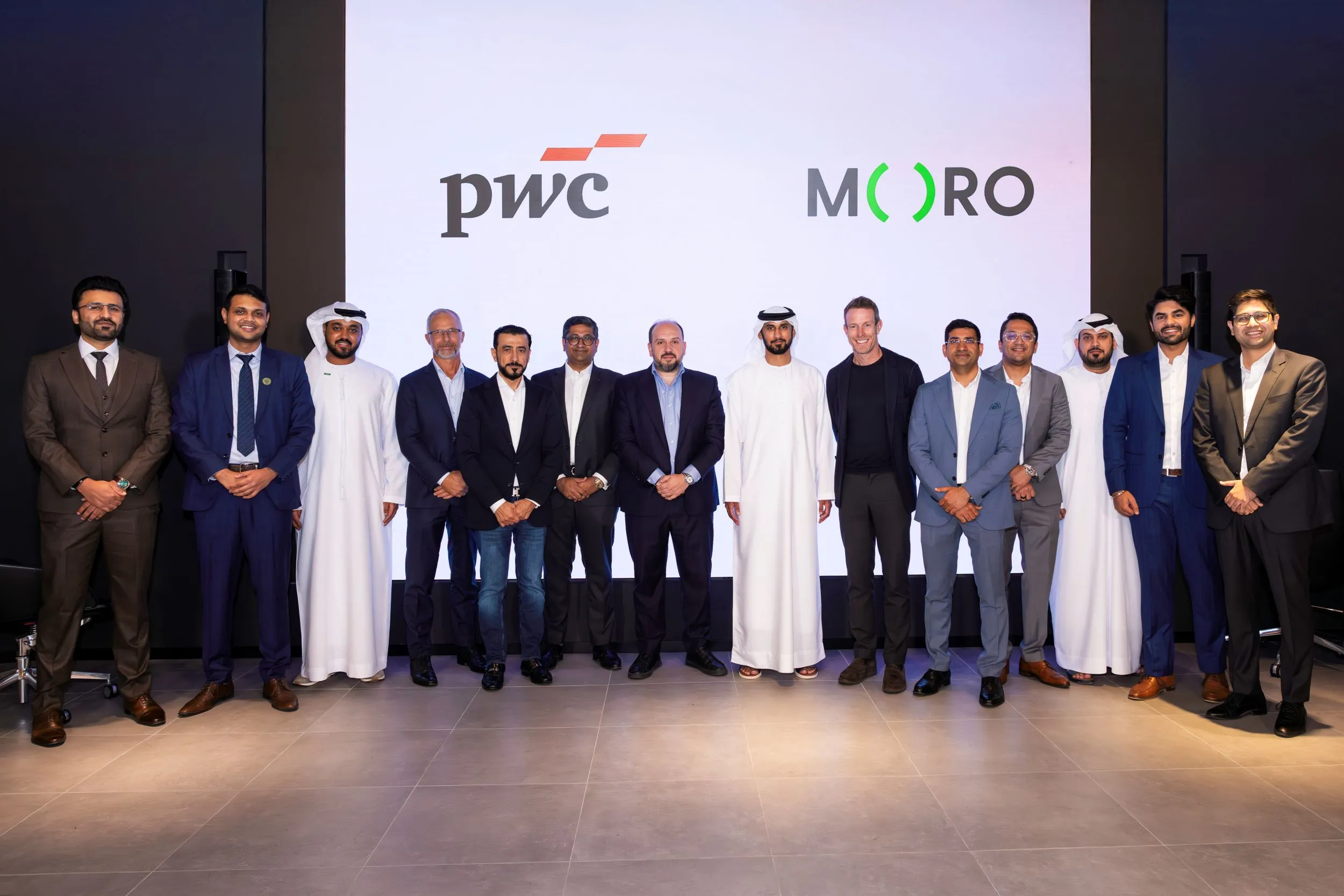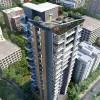Location is a key determinant of a property’s value and return on investment. Arguably, what location is to real estate, alignment is to a metro system. A metro system’s alignment, the areas it services, plays one of the most important roles in its financial viability. So, what constitutes an ideal metro alignment?
Ideal alignments
Ideally, “a metro must pass through densely populated areas and major interchange transport hubs (bus stands, railway stations, bus termini, airports) for the smooth changeover of passengers using multimodal transport,” says Vishwas Jain, Managing Director, Consulting Engineers Group.
“An ideal metro will not pass through forest and ecological zones including restricted areas, and
will require minimal rehabilitation and relocation.”
“Only an alignment that covers densely populated or high-traffic areas can effectively serve a city’s needs or generate sufficient ridership,” says Anuj Dayal, Principal Executive Director, Corporate Communications, Delhi Metro Rail Corporation (DMRC).
In that context, the Delhi Metro was aligned to connect high-density catchment areas to maximise ridership and make it financially sustainable. In particular, “Delhi Metro’s Phase 4 focuses on enabling efficient interconnectivity between the existing network and the new corridors, providing alternative routes for congested lines such as the Blue Line, which will be assisted by the upcoming Magenta Line extension from RK Ashram Marg to Janakpuri West,” explains Dayal. “Additionally, Phase 4 will connect densely populated and underserved areas of Delhi, like Nabi Karim, making sure it gives better access and reduces travel times.”
When planning the metro alignments in cities like Lucknow, Kanpur and Agra, the primary goal of the Uttar Pradesh Metro Rail Corporation (UPMRC) was to connect key urban areas and major transport terminals, such as airports and railway stations, to facilitate seamless passenger movement and alleviate traffic congestion in densely populated areas, according to Sushil Kumar, Managing Director, UPMRC. For instance, the Lucknow Metro’s North-South Corridor, spanning 23 km, connects vital points like Chaudhary Charan Singh Airport and major bus stands, strategic positioning that enhances accessibility for commuters, thereby increasing ridership and, in turn, potential revenue.
The Hyderabad Metro’s alignment was chosen to connect key residential and commercial areas, covering dense regions such as Ameerpet, Kukatpally, Miyapur and HITEC City, says KVB Reddy, MD & CEO, L&T Metro Rail (Hyderabad). This ensured a high footfall from commuters who travel to business hubs, schools and hospitals daily. Acting as a core, it also offered possibilities of expansion of lines in subsequent phases as natural extensions.
Jain cites the metros in Mumbai, Chennai, Surat, Pune, Nagpur and Navi Mumbai as having been aligned to deliver the highest returns while the Jaipur metro alignment falls short.
First-mile and last-mile access
No mention of the alignment of a metro and its returns is complete without mention of first-mile and last-mile access. A working paper by WRI India, titled Improving Metro Access in India: Evidence from Three Cities, describes the metro rail paradox that arises from the truisms that while a journey on a metro in India is usually comfortable, convenient, reliable and safe, getting to the metro rail station (and to a user’s destination after disembarking) often entails an uncomfortable, unsafe and unreliable journey. Such first-mile or last-mile access issues dissuade many commuters from taking the metro. As Aloke Mukherjee, Manager - Transport, WRI India, points out, “This is an important factor hampering the full utilisation of our high-quality, capital-intensive metro rail systems, which has been clearly recognised by the Union Government. The 2017 Metro Rail Policy draws a major link between proper last-mile connectivity and metro ridership, mandating improved planning for last-mile connectivity as a precondition for financial assistance for any upcoming metro projects.”
So how do first-mile and last-mile issues impact a metro’s alignment? He explains, “Almost all metro rail systems in India are new projects being installed in cities that already have well-established job centres and commuting patterns. To ensure the viability of the metro in the short and medium term, alignments that access the city’s key job concentration centres are critical.”
Further, if the metro cannot provide walking access to crucial residential, commercial and industrial hubs, then, at the design stage itself, Mukherjee says, “We need to understand (and plan for) the types of modes that can seamlessly connect these hubs to the metro station.”
Most Indian commuters are both budget and time-conscious, making it important to provide frequent, low-cost shared services such as feeder buses or rickshaws at most metro stations. For stations that serve higher-income demographics (for example, around tech parks), there is scope to experiment with higher-cost, on-demand services that provide fast access.
A positive trend is that most metro rail agencies and other relevant government stakeholders have understood the need for proper access and are implementing holistic planning approaches, evaluating access requirements very early at the design stage, he adds, a move that is in line with the principles of transit-oriented development (ToD) released by the Ministry of Housing and Urban Affairs (MoHUA).
Final support for a metro project
A metro system is a huge investment for any developer. Thus, Sushil Kumar, Managing Director, Uttar Pradesh Metro Rail Corporation (UPMRC), recommends tapping government support or public funding to aid construction and operational costs. “PPPs can also help mitigate financial risks, ensuring a stable funding framework,” he says.
Affirming the role of PPPs, government subsidies and foreign investments in reducing the financial strain on developers, KVB Reddy, MD & CEO, L&T Metro Rail (Hyderabad), points out that tax incentives and low-interest loans also play a role.
Manish R Sharma, Partner and Sector Leader, Infrastructure & Logistics, PricewaterhouseCoopers, points out that to address suboptimal financial returns – financial returns in the low or medium single digit range, below commercially acceptable thresholds – governments often support metro projects with low interest bearing, long duration and larger moratorium period loans as well as other fiscal measures.
Incidentally, Hyderabad Metro’s PPP model was the largest of its kind in India. “L&T, as the private player, managed to leverage its brand to attract reputed institutional lenders to fund the large capex and has undertaken financial engineering to sustain the project financials,” says Reddy.
Practical considerations
While the alignment of metro lines ideally aims for the highest possible returns, practical considerations often influence the final design. “Factors such as the availability of land, environmental impact, existing urban infrastructure and socioeconomic demographics play significant roles in alignment decisions,” says Kumar. In many cases, he points out that the best theoretical alignment may not be feasible owing to these constraints.
Consider the Hyderabad Metro. “There were practical challenges that prevented the metro from following the most ideal revenue-generating routes,” says Reddy. “Some parts of the city with high economic activity were bypassed due to political pressures or to avoid disruptions in congested areas. Also, acquiring land along the best corridors would have led to delays, cost overruns and legal battles. As a result, the metro had to realign in certain areas, which might have affected its potential ridership.”
In the case of one city metro project, which is now operational, Manish R Sharma, Partner and Sector Leader, Infrastructure & Logistics, PricewaterhouseCoopers, points out that at the time of planning and conceptualisation, a choice had to be made between aligning it along the median of
the major road corridors or along prevailing railway corridors
through the city, which were already being serviced by multimodal transport services. Considering that riders usually prefer to move along their existing alignment and origin-destination pairs, it was decided to build the metro above the road medians.
Practical considerations also impact the choice of an elevated or underground route. In Agra, for instance, the first corridor, from Taj East Gate to Sikandra, includes both elevated and underground sections, an approach designed to maximise ridership by connecting high-traffic areas and ensure minimal disruption to the city’s historic landscape and cultural fabric.
In Kanpur, one of the two proposed corridors of approximately 32 km each, running from IIT Kanpur to Naubasta, has a mix of elevated and underground sections to effectively navigate urban obstacles, a choice of alignment Kumar says “reflects practical considerations”.
“Underground sections were chosen in areas with high land-use density, ensuring minimal disruption to existing infrastructure and urban life,” he explains. “Such decisions are essential for smooth operational flow while accommodating the needs of the community.”
In the instance of the Greater Noida-Noida and Gandhinagar-Ahmedabad Metro links, practical considerations like resettling a
large number of people, cutting trees and other environmental issues impacted small stretches
of the alignment. However, Sahadeva Singh, Project Director, AICA General Consultant/Line
2B and 7, Mumbai says these weren’t significant. What was significant was the prioritisation of economic benefits.
“In the short term, the alignments selected may have appeared less financially viable than other alternatives, but their long-term benefits of better organised transit-oriented and accelerated development favourably impacted the revenue as well as social costs, and lowered the environmental impact,” he reasons.
Economic viability
What emerges is “a metro’s alignment is an economic, technical and sociopolitical issue that factors in the short as well as medium and long-term aspirations of people,” in Singh’s words.
A city’s economic development rate can affect the long-term success of a metro, according to Reddy. As the economy grows, so does the population’s demand for reliable transportation, increasing ridership and revenue. In fact, he points out that the environmental benefits of metro systems often attract subsidies or grants, contributing to financial sustainability. Projects that
positively impact urban congestion and pollution have an indirect benefit by reducing the strain on other infrastructure.
“A metro’s success is not solely measured by its financial returns but also by its ability to provide efficient transportation, reduce congestion and improve the quality of life of citizens,” says Dayal. Improving urban connectivity is the primary objective of any metro system.
Alignment to construction
A metro’s alignment is closely tied with the optimisation of land acquisition costs and capital expenditure. It is such an important a factor that Dr GVR Raju, Managing Director, Global Transportation, Europe & India, AECOM, India, recommends allocating more time for the development of the design to optimise the alignment, station lengths and the number of entrances.
Ultimately, a metro’s alignment as well as engineering decisions such as the type of structure (underground or elevated), viaduct or bridges, method of construction and footprint have a strong bearing on its lifecycle cost, says Singh. He reckons that the capital and operational costs of civil structures constitute 30-40 per cent of the lifecycle cost of metros.
Their early replacement in part or more has a severe impact on the metro’s finances. With most metros currently being funded by the Government and backed by government guarantees, such increases affect consumers.
The choice of a metro’s rolling stock, rail tracks, signalling systems, power systems, fare collection systems and associated technologies impacts the need for manpower to operate and maintain them. Singh estimates these account for 60-70 per cent of a metro’s lifecycle costs.
Of course, “standardising the specifications of rolling stock across cities helps to procure such assets competitively,” points out Dr Raju.
Lowering civil capex
The cost of constructing a metro system and completing it in time sans cost escalations directly affects its financial viability. The big question is: How can the construction cost be trimmed and the project completed in time?
Optimal station design and provision for future extension lower a metro system’s capital expenditure by minimising the land acquisition cost and station construction cost, a modus operandi being implemented in Chennai Metro Phase 2, explains Dr Raju.
Singh points out that Indian metro stations, which are usually large in size to cater to the high density of population in cities, are best constructed as elevated metro systems, which are less expensive to construct and operate. “Underground metro systems are mostly financially unviable in India because they cost 3x to 4x more to construct and much more to air-condition,” he says. “Very few small reaches exist where despite factoring in these higher costs they are economical.”
Ultimately, “due diligence will help evaluate a metro’s potential alignment whether elevated or underground, which must be linked with other factors,” says Jain.
Applying the best technology for the chosen system helps reduce construction costs, and this may vary for elevated and underground routes.
To cite an example, the Delhi Metro has both elevated sections and underground sections. “The metro uses leaner structures in its elevated sections while saving space and the adoption of precast structures has further sped up construction while maintaining quality and durability,” shares Dayal. “Where underground metro systems are chosen, technologies like tunnel boring machines (TBMs) for underground construction minimised surface disruption and sped up project timelines.”
Technologies for elevated routes
Innovative construction technologies and methodologies have helped Tata Projects meet the tight timelines of its Pune Metro, Mumbai Metro and Chennai Metro, and also manage costs and maintain high construction standards.
In elevated metro projects, Manish Samtani, Vice President & BU Head, Rapid Transit (Metros, Tunnels & Environment), Tata Projects, points out that applying steam curing to prestressed concrete (PSC) T-Girders reduces curing time from 10 days by means of normal water curing to just six days, and helps save costs too. PSC T-Girders measuring 18 m are essential for constructing the roofs of the concourse levels of metro stations.
“Further, using reusable RCC barriers paired with MS (mild steel) barriers is less expensive and sustainable than conventional full MS barricades,” he adds. “Also, a friction collar used to construct pier caps eliminates the need for traditional cup-lock staging and reduces the time to complete pier caps from 10.5 days to just five days per cap, slashing labour costs, reducing material transportation, minimising cranage requirements and reducing the safety risks associated with working at a
height. And using a station launching gantry instead of a crane to erect girders for metro stations allows the station girder to be lifted from the platform level, a space-efficient, safer, faster and cost-effective alternative.”
“For the construction of elevated routes, precast elements and standardised modular stations help to optimise the capex,” adds Dr Raju. “Further, the cost of a viaduct can be optimised by opting for single piers in the road median supporting the metro viaduct as well as an elevated road, an option that was exercised first in Nagpur Metro Phase 1 and Pune Metro Phase 1 and is now being implemented in Chennai Metro Phase 2.”
Modern construction techniques that enable faster project completion and cost savings include prefabrication methods for the rapid assembly of structures, which was particularly evident in the Lucknow and Kanpur metros that were completed ahead of schedule, shares Kumar, noting that such efficiency minimises financial burdens and accelerates the return on investment, as operational services can commence sooner.
“The extensive use of pre-engineered building, green building and modular construction technologies, extensive use of precast elements, renewable energy sources and standardised components under Make in India as specified by the MoHUA can help deliver savings during the construction of a metro,” says Jain.
Underground construction technologies For underground metros, station lengths and geology dictate the capex, says Dr Raju.
In dense urban environments, Samtani points out that space constraints make traditional cut-and-cover methods for underground metro station construction challenging. Instead, a hybrid construction technique combining elements of both cut and cover and the New Austrian Tunnelling Method (NATM) minimises the station’s footprint while allowing for efficient and safe excavation and construction of station boxes. For complex sites with existing and sometimes sensitive infrastructure, the technique incorporates sacrificial piles, secant piles and controlled blasting to ensure structural stability and minimise disruptions. Hazard zone markings for trailers transporting segments have improved driver safety and judgment, while reducing public risks.
“Embedding radio frequency identification (RFI) tags into tunnel segments helps to digitally identify and track each through its entire lifecycle, from production to erection, thus enhancing operational efficiency by reducing manual errors, improving quality monitoring and providing real-time data on segment handling and placement,” adds Samtani.
To address corrosion in reinforced concrete, Tata Projects has adopted an innovative corrosion inhibitor solution known as BI-Polar liquid. Unlike the traditional CPCC (cement polymer composite coating) system, which was manually applied and prone to inconsistency, the BI-Polar liquid can be directly added to the concrete through an automated system for better uniformity and efficiency in application, reducing rework and improving overall production cycles.
Project management
Coming to project management tools, “effective project management tools and the use of precast prestressed elements accelerate the rate of progress as well as reduce the labour and supervision cost between 5 and 10 per cent,” says Singh. “Using design and construction interface tools like the latest version of BIM, utility identification tools, GPR, correctly determining the geotechnical properties of soil/rock, regularly updating and validating the concrete mix design, using superplasticisers, etc, with the respective latest software can further save approximately
5 per cent of the cost.”
During the construction phase of Hyderabad Metro, Reddy says, “L&T utilised BIM for efficient project management and coordination. This helped minimise delays, control construction costs and reduce material waste, thus helping the project stay within budget.”
According to Singh, one of the major missing links in cost-saving measures is creating a national data bank on design outcomes that can be used and benchmarked by forthcoming projects in other cities. Cost aside, he points out that the right tools also minimise the adverse impact on the environment by reducing the quantity of cement, rock aggregates and steel required, excavations and project duration.
Revenue potential
In addition to low capital expenditure, Dr Raju identifies higher fare box and non-fare box revenue as important factors in making a metro project viable. Insofar as fare revenue is concerned, it is mostly determined from the metro’s ridership potential.
“Evaluating the population density along the proposed metro corridor, residential and commercial hubs, as well as the potential for future growth, helps estimate ridership,” says Reddy. Further, “the pricing strategy must balance affordability for commuters with the need to generate sufficient revenue. Competitive yet profitable fare pricing is key.”
Fare box revenue can be improved by making metro travel attractive with convenient last-mile connectivity and multistorey car parks at main metro stations, recommends Dr Raju.
That said, the opportunity to increase fare box revenues is limited. “Fare box revenues,” explains Sharma, “being a function of ridership and tariffs, can only be increased up to a point, as tariffs cannot be increased arbitrarily and indefinitely, given pressure from competing modes like buses and para-transit, as well as affordability issues.”
Consequently, he believes the financial viability of a metro can further be improved by focusing on tapping non-fare box revenues as well as innovative revenue sources like impact fees/cesses in the project influence area.
“Non-fare box revenue arises from advertisements, fibreoptic cable, transit-oriented development and levying enhanced taxes on properties within the 500-m corridor (2×250) of the metro alignment,” says Dr Raju. “Granting higher floor area ratio (FAR) within the 500-m corridor of the metro alignment helps generate additional development fees.”
In Hyderabad, a key strategy L&T utilised to increase returns was transit-oriented development around metro stations, shares Reddy. “The development of mixed-use zones around metro stations has attracted real-estate investment and contributed to the metro’s financial sustainability through increased foot traffic and leasing of retail space.”
Metro operations can generate significant non-fare revenue through commercial leasing at metro stations, advertisements, naming of stations, retail partnerships, real-estate development around stations (transit-oriented development) and parking fees, he adds. “The effectiveness of leveraging these sources can greatly influence financial returns.”
Operational efficiencies
A sensible alignment will ensure that the projected economic returns are realised but it is still not a panacea for the financial performance of a metro project. A metro’s profitability is also influenced by its operational costs, whether for running and maintaining the rolling stock or servicing customers.
To reduce electricity consumption and operational costs, Hyderabad Metro employs regenerative braking, which helps capture and reuse energy from braking trains. L&T has also used driver-assisted semi-automated technologies for Hyderabad Metro operations to reduce the cost of staffing. This additionally boosts the metro’s safety quotient, thereby boosting public confidence.
Further, predictive maintenance techniques using IoT sensors and AI-based analytics ensure that rolling stock and infrastructure are serviced before failures occur, says Reddy. “This reduces downtime and prevents revenue losses due to disruptions.”
“Outsourcing operations and maintenance with an emphasis on preventive maintenance also helps,” adds Jain.
Among the cutting-edge technologies contributing to an operational metro’s financial viability, Kumar cites automatic train operation (ATO), a standout feature whereby trains operate under a centralised computer system, maintaining precise speeds and safe distances. ATO improves safety and efficiency by minimising human error and optimises scheduling, allowing for more frequent service and increased ridership. Communication-based train control (CBTC) facilitates real-time communication between trains and trackside infrastructure, thus enabling closer train spacing without compromising safety and reduced waiting times for passengers and increasing capacity utilisation, crucial in densely populated areas.
As for customer-centric technologies, “in Hyderabad, advanced ticketing systems such as smart cards, QR-based tickets and mobile payment options reduce transaction times and enhance customer convenience, besides lowering the need for staff,” says Reddy. “Automated train control systems, smart ticketing solutions and energy-efficient trains deliver savings during operations,” agrees Jain.
In Uttar Pradesh, Kumar points out that the National Common Mobility Card (NCMC) card, integrating ticketing across various modes of transport with the aim of promoting interoperability, makes travel easier and more economical for commuters, encourages higher usage rates, fosters passenger loyalty and contributes to sustained revenue growth.
UPMRC has also integrated online ticketing systems and mobile applications that streamline fare collection to reduce the need for physical ticket counters and minimise queuing times, enhancing the overall customer experience. Further, advanced CCTV surveillance systems implemented throughout stations and trains ensure passenger safety and security, a critical factor in attracting and retaining commuters.
Where the interfacing software and other technologies aren’t being used or their on-ground effective utilisation is a concern, Singh recommends using integrated tools to monitor their use. Indeed, every technology that contributes to profitability plays a role.
How best to evaluate a metro project?
Sushil Kumar, Managing Director, Uttar Pradesh Metro Rail Corporation weighs in on evaluating a metro project:
At its simplest, the evaluation of a metro project involves a cost-benefit analysis covering capital costs and operational expenses on the one hand, and revenue projections on the other. Additionally, the long-term economic impact of the metro system should be considered, particularly how it will contribute to local economic growth, increase property values and create jobs in the region.
The social and environmental impact of the metro project is another critical factor. Evaluating sustainability considerations, such as the environmental benefits of reduced traffic congestion and pollution, aligns the project with governmental sustainability goals. Ensuring social inclusion by making the metro accessible to all socioeconomic groups can potentially enhance ridership and garner community support.
All the while, construction risks, including possible delays and cost overruns, and market risks, such as economic fluctuations that could impact ridership and funding, must be carefully considered.
Revenue projections, in turn, involve demand forecasting based on demographic studies, population growth trends, urbanisation patterns, travel behaviour analyses and commuter patterns through origin-destination studies to identify high-traffic corridors and potential usage. Ultimately, a metro system must serve immediate passenger needs as well as support long-term urban mobility goals.
